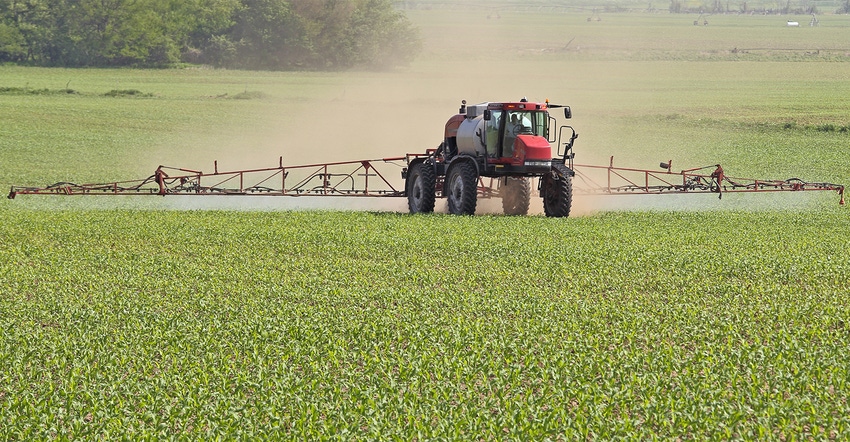July 1, 2017

Sponsored Content
It’s usually not a question of whether to spray or not to spray, according to Josh Bechdel, an agronomy salesman with Doebler’s dealer Webbs Super-Gro Products in Mill Hall, Pennsylvania.
“You spray to optimize yield potential,” Josh says. “You spend a lot of money on seed, fertility and weed management. Knowing what weeds you have prior to planting is crucial, particularly when it comes to glyphosate-resistant marestail [for example].”
Timing of Application
One of the most common noxious weed that ails Pennsylvania corn farmers today is marestail.
Marestail starts to emerge in late March and can continue to emerge through June. It can also develop in late summer into fall and is very difficult to control if it escapes an herbicide application. That’s especially true for the marestail plants that emerge in May and June, Josh notes.
“With corn, we’ve been using a half to three-quarters of a pint of dicamba post-plant to pre-emerge to try and control marestail,” he says. “It’s effective, but some of the one’s that have some height will probably need a follow-up application.”
However, every farmer knows that each crop has unique insects and weeds in their respective region. As such, there is not a one-size-fits-all schedule for when is best to spray what for all weeds and insects in all regions. In terms of economic thresholds, Josh says the best resource in determining when to treat is your local or state level university extension agronomists.
Importance of Scouting
No matter the amount of proactive management, however, surprises are bound to arise throughout the growing season.
“Soybeans will not tolerate slug feeding as much as corn, because their growing point is above ground,” Josh says. “They’ve been very problematic in the last few weeks [in my area], with optimum conditions for them: no-till, heavy residue, cool, wet weather for quite a while. Control measures are very few and far between and effectiveness is questionable, especially with baiting or with metaldehyde. We’ve used pelleted metaldehyde, but the trick is to scatter that at ten-pounds to the acre. It’s a little pellet, so spreading it without pulverizing it is a little tricky. As a last resort there’s methomyl, but that control is very inconsistent, plus it needs to be done when the slugs are out, so late evening or early, early morning application is crucial.”
While surprised are an inevitable aspect of farming, mitigating the risk of a failed crop at harvest starts with diligent scouting in the field.
“You have to get out and scout,” he says. “You have to stay consistent. We have a lot of corn and beans that have been replanted here in central Pennsylvania. It’s rare that you can walk out into a field and snap your finger and say, ‘that’s the problem,’ seeing one particular issue in the same field. I’ve seen a couple of soybean fields that have had numerous issues such as seedling blight, where you had crusting, and it was planted wet and there were slugs as well.”
Safe Handling
All spraying programs should include some basic safe handling practices.
“The biggest one is to follow the label,” Josh says. “The label will tell you about application rates, and also what you need to have on as far as personal protective equipment.”
Beyond label instructions, it’s also important to pay attention to the weather. Josh advises to spray when the wind velocity is low and keep your sprayer ground speed reasonable to avoid boom bounce.
About the Author(s)
You May Also Like




